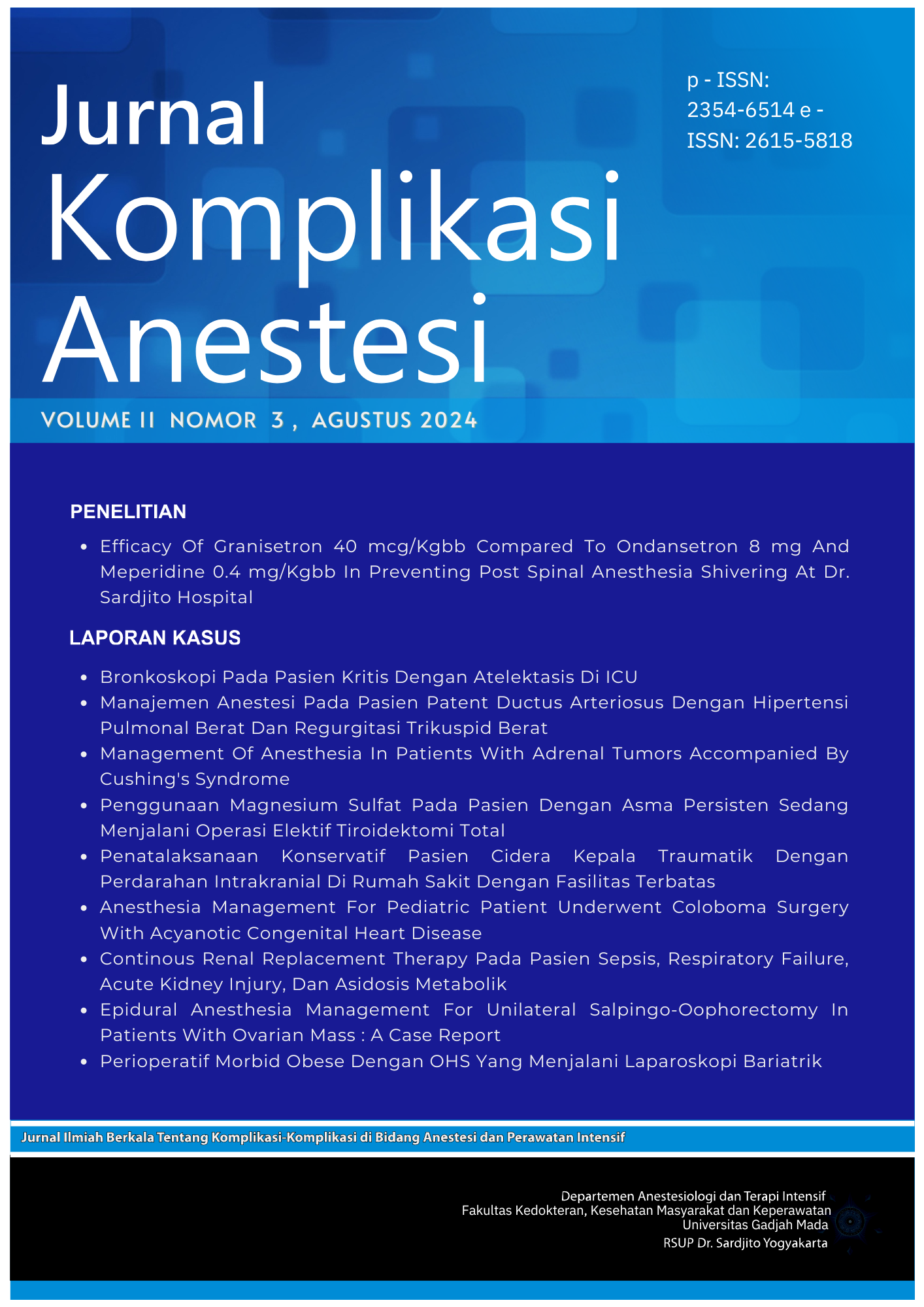Perioperatif Morbid Obese dengan OHS yang Menjalani Laparoskopi Bariatrik
Abstract
Introduction: Laparoscopy, a minimally invasive surgical procedure that uses CO2 gas to create space between the abdominal wall and internal organs for endoscopic access. The main challenges include cardiopulmonary effects from pneumoperitoneum, systemic absorption of CO2, gas embolism, and injuries to intra-abdominal structures. General anesthesia is often the preferred choice, especially in high-risk cases like obesity, to avoid complications like reflux and aspiration. The author intends to discuss with the aim of understanding physiological changes, complications, and specific management strategies for laparoscopic bariatric surgery.
Case Description: A 30-year-old woman with significant weight gain underwent treatment for obesity but made no progress. She was referred for surgery and underwent a specific procedure called sleeve gastrectomy on October 5, 2022. Medical history included controlled hypertension and diabetes, and emerging symptoms were uncontrolled appetite, fatigue, and shortness of breath. The operation was performed under general anesthesia, and her care included detailed monitoring and prevention of complications. This case highlights a comprehensive approach to treating morbid obesity.
Discussion: Obesity is often associated with hypertension and changes in heart response. In the context of bariatric laparoscopy, physiological changes associated with pneumoperitoneum and patient positioning may cause cardiorespiratory compromise, especially in obese patients who already have pre-existing cardiopulmonary dysfunction. The balanced general anesthesia technique with mechanical ventilation is considered the best for minimally invasive surgery requiring CO2 insufflation. A multimodal approach in analgesia and antiemetic prophylaxis is needed to reduce postoperative side effects, and early diagnosis of complications.
Conclusion: Minimally invasive surgery, such as bariatric laparoscopy, aids in pain reduction and faster recovery, especially important for patients with obesity. The balanced general anesthesia technique with mechanical ventilation is considered optimal for this procedure. Proper monitoring and maintenance after surgery are key to preventing postoperative complications and side effects.
Copyright (c) 2024 Dya Restu Saputra, Erlangga Prasamya, Pinter Hartono

This work is licensed under a Creative Commons Attribution-NonCommercial-ShareAlike 4.0 International License.
The Contributor and the company/institution agree that all copies of the Final Published
Version or any part thereof distributed or posted by them in print or electronic format as permitted herein will include the notice of copyright as stipulated in the Journal and a full citation to the Journal.

















